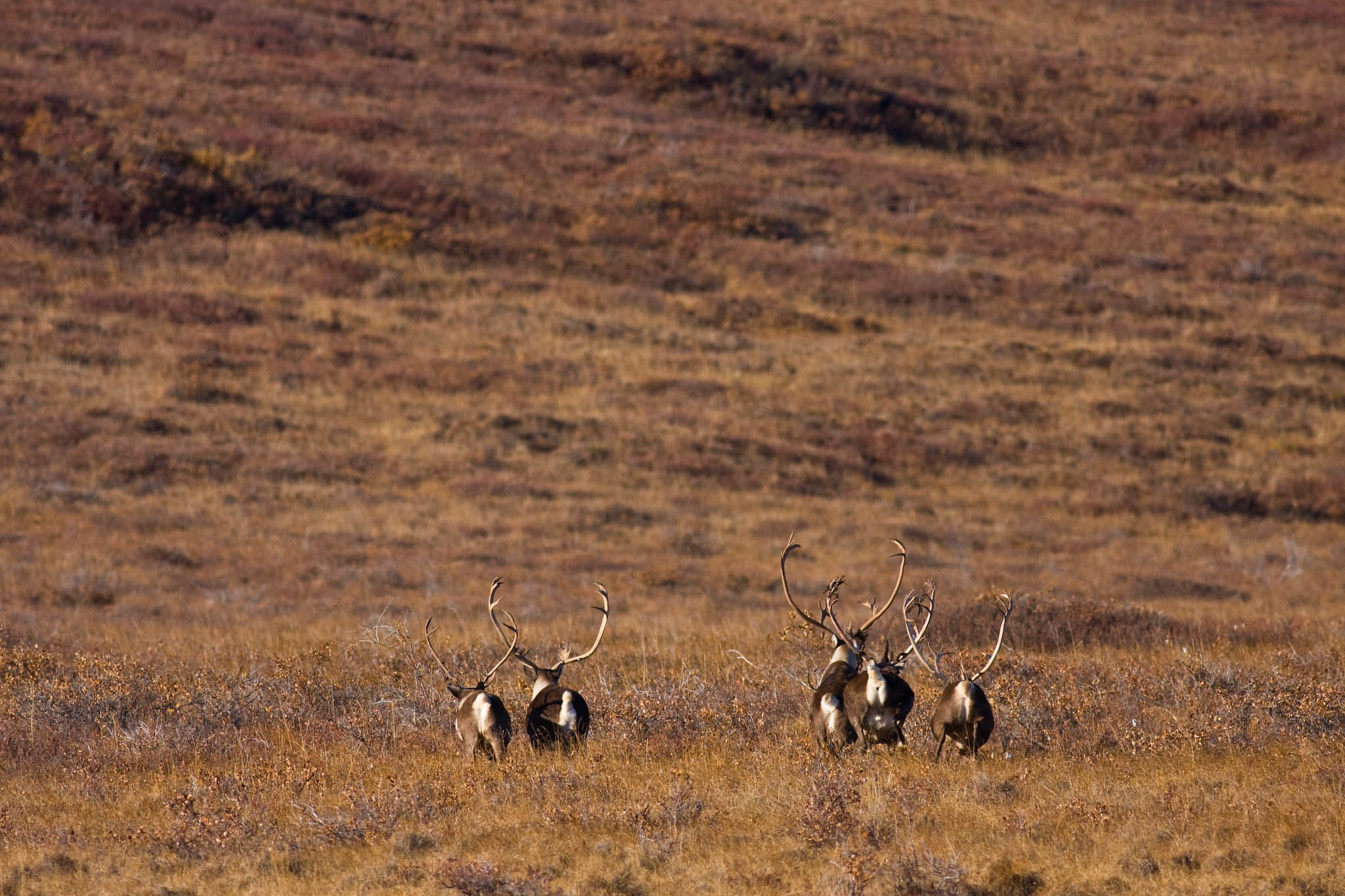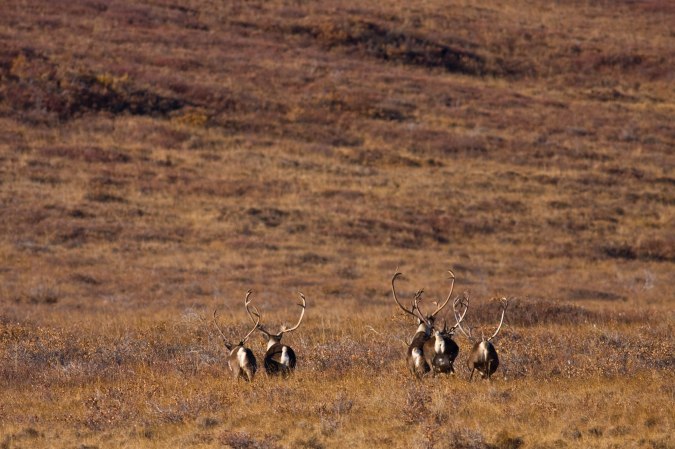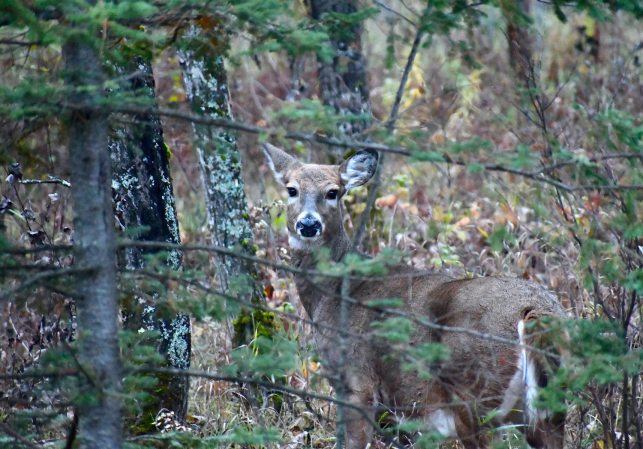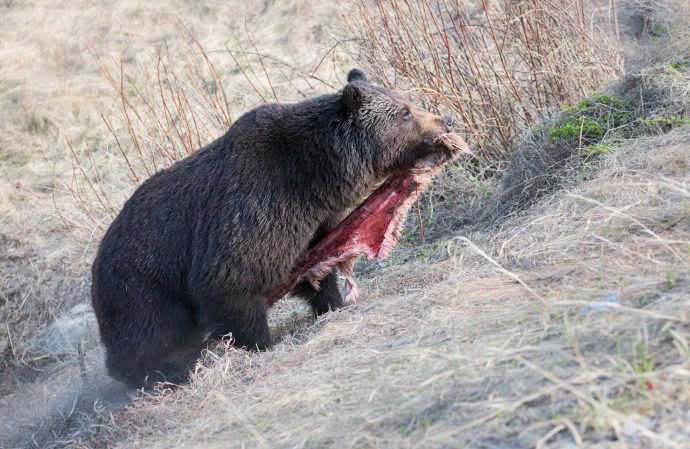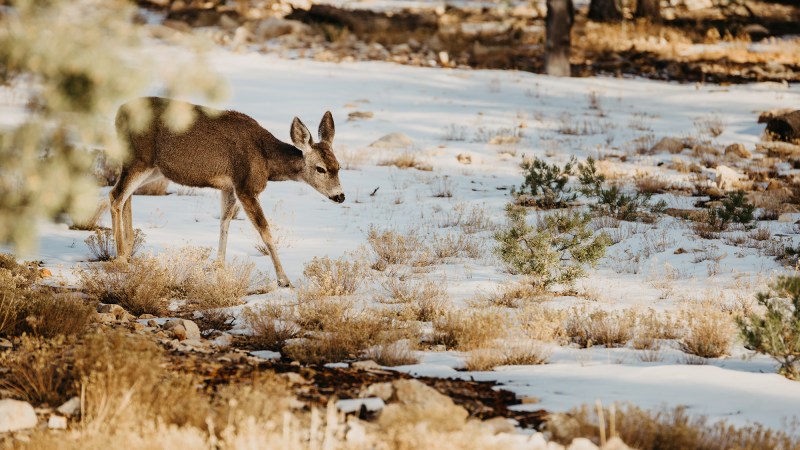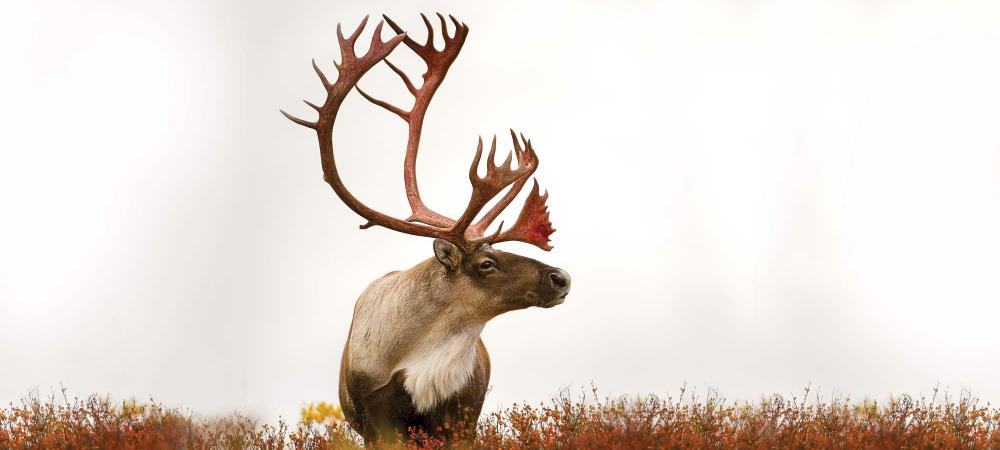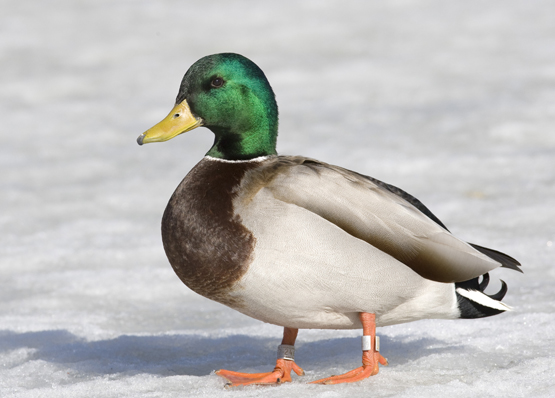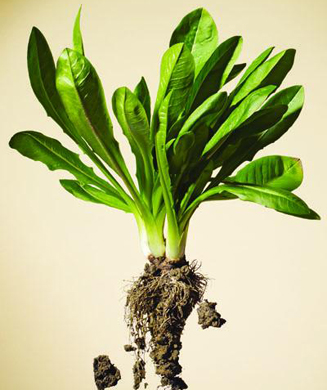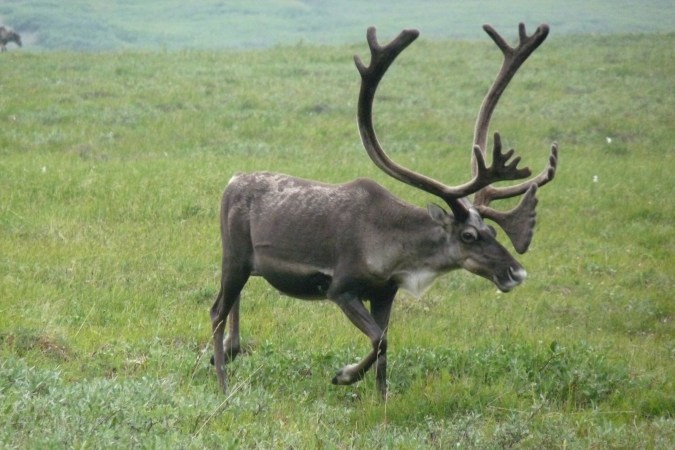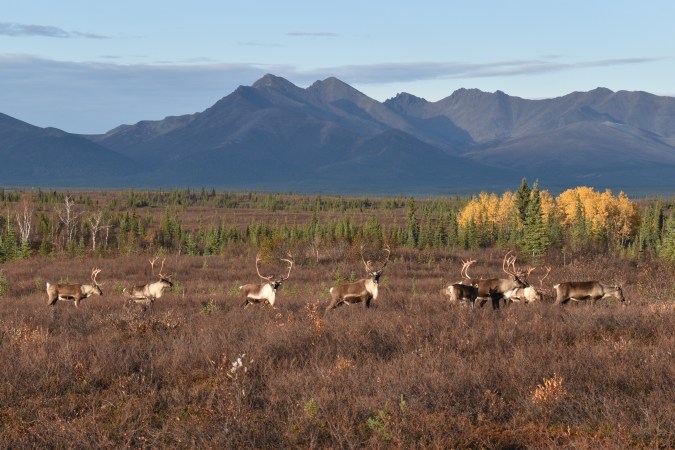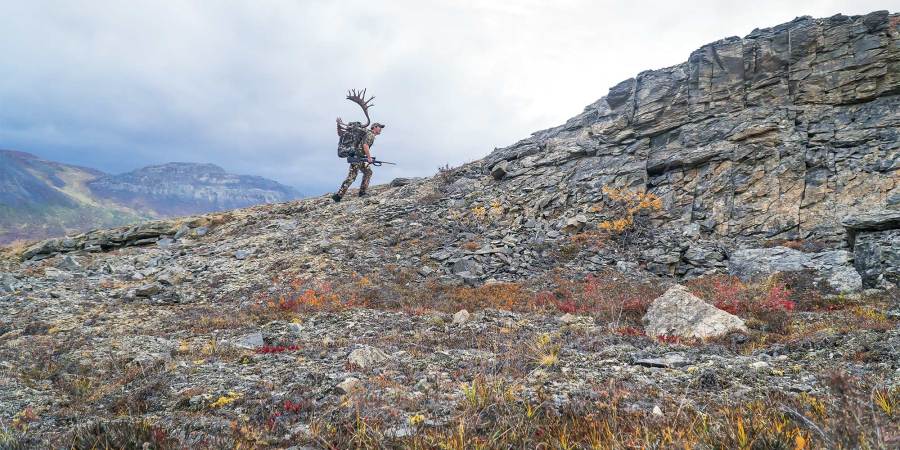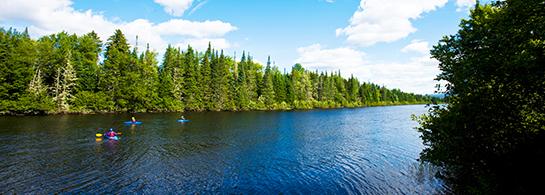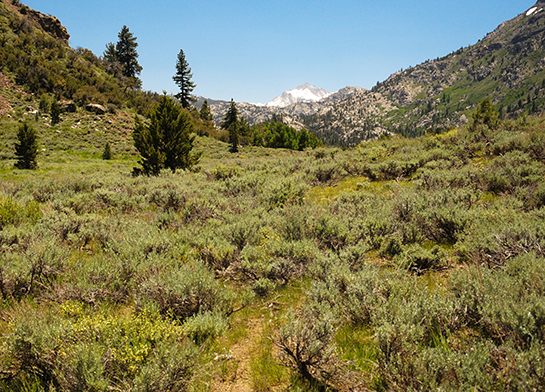Over the last two weeks, various outlets have been trickling out information from a December 15, 2021 meeting of the Western Arctic Caribou Herd Working Group, in which the Alaska Department of Fish and Game announced a new population estimate for the Western Arctic Herd at around 188,000 animals—down from an estimate of 244,000 animals in 2019.
This is a troubling announcement, especially if you have been following our coverage of the WSA21-01 issue, where proposed regulations could still close more than 60 million acres of federal lands to non-local moose and caribou hunters in 2022. The new population estimate is certainly concerning, but what does it really mean when it comes to the health of the herd and potential restrictions for resident and nonresident hunters?
Digging into the Numbers
The WACH Working Group doesn’t create regulations. It’s a conglomerate of agencies, users, and stakeholders that carefully monitors the herd and helps establish management objectives.
Hopefully in the coming months we will see more detailed information from ADFG, as well as the WACH Working Group, but all the caribou population information that’s currently being cited is from the Working Group’s recent meeting. (It was presented by ADFG biologist Alex Hansen, whose presentation slides can be found on pages 13 through 21 in the Meeting Binder.)
As a result of the 2021 photocensus survey, the Western Arctic Herd has a population estimate of 188,000, give or take 11,855 animals. The estimate has a confidence interval of 95 percent, which means that surveyors are 95-percent confident that the population is between 176,145 and 199,855. That indicates a 23 percent decline in the herd since the last survey in 2019. Importantly, it puts the herd just below the 200,000 animal threshold at which more intensive management is recommended by the Working Group. In other words, the management goal is to keep the herd at or above 200,000 caribou, where it can sustain annual harvests of 10,000 to 14,000 animals or more. When the herd dips below 200,000, the management plan calls for recommendations of harvest reduction.
Several media outlets correctly point out that the Working Group voted unanimously to change the management level of the herd from its previous status as “conservative declining” to “preservative declining.” This would be expected with such a decline, as the management level is voted on based on a table in the Working Group’s management plan (p. 18 and 19).
The management level is chosen based on the overall herd population, adult cow survival, and calf recruitment. In a preservative management level, the Working Group makes several recommendations to regulatory agencies, such as stopping the harvest of calves (which is currently allowed), limiting the harvest of cows (and bulls in some cases), and potentially restricting harvest to residents only or closing some federal lands. It’s worth pointing out that this management level still calls for a harvest of 6,000 to 10,000 caribou per year.
Biologists don’t have any clear answers when it comes to the reason for the herd’s decline, but Hansen says deeper snow and shifting weather patterns can lead to caribou deaths.
“In my opinion, it seems to be the classic death by a thousand cuts,” Hansen said at the meeting on Dec. 15, 2021, according to the Anchorage Daily News. “We have a lot of things going against us and we are working to understand it all…We’re not currently seeing anything drastic, as far as mass mortality event, but we are seeing changes in migrations that put the caribou in different locations.”
Although some outlets suggest that hunting pressure is one of the three leading causes of the decline, no biologists or agencies seem to have made that assertion. When it comes to non-resident hunters, who are facing the most imminent restrictions, their impact on the herd is insignificant. In fact, non-local hunters only kill around 250 to 300 caribou from the Western Arctic Herd per year, or about 2 to 7 percent of the harvest, according to Hansen.
Delayed Caribou Migration
Along with this recent population decline, the change in migration patterns in recent years has been a matter of concern—and speculation. Caribou of the Western Arctic Herd have generally been migrating south later and in different places, making it more difficult for some subsistence hunters to locate and target the caribou that support them. These changes have been the source of a lot of finger-pointing, and the source of proposed regulations like WSA21-01 which would prohibit non-local hunters (including Alaska residents) from hunting the herd.
Many local hunters believe that low-flying aircraft and non-local hunters flying out from communities like Kotzebue are diverting the Western Arctic Herd’s migration, effectively taking food out of their freezers. Conflicts between local and non-local hunters have a long history in the region.
Kyle Joly, a PhD biologist with the National Park Service presented migration monitoring data to the WACH Working Group in the meeting. Joly has been studying caribou in the Arctic for a long time, and I was able to speak with him regarding these changes in migration. The ADN article seemed to emphasize Joly’s presentation information on the Red Dog Mine Road and its effects on migrating caribou.
“One of the biggest factors slowing down herd migration by almost a month is the Red Dog Mine Road,” reported the ADN story. This statement was followed up with a quote from Joly who said: “One of the most obvious impacts that we see on the caribou migration is this road.”
Contrary to how this information was presented by the ADN and other outlets, Joly isn’t saying that the road is delaying or changing the migration of the entire herd, just the caribou who encounter it. It’s worth noting that the road has existed since 1989 and was in-use before and during the WACH’s boom to 490,000 animals in 2003. When I asked Joly about this spin on his statement, he emphasized the meaning of the word “obvious” because the road is a non-variable obstacle that they have used to collect data to show how the caribou react to it. Joly participated in a study specifically looking at this issue, and they found that some caribou are reluctant to cross the road. According to the study, over a period of ten years, 32 collared caribou came within 15km of the road. Of those, four of the caribou never crossed the road, and another eight took longer than expected. Tracking data showed movements that indicated some caribou were hesitant to cross, and a clear impact that the road has on some of the caribou’s movements. Within the context of the whole WACH migration, it’s important to note that the 32 who came within 15km of the road were out of a total of 216 caribou collared, most of which never encountered the road.
“It ranges from zero to 34 percent of the herd generally migrates on that western route,” Joly says.
Climate change and weather pattern changes in recent years are often pointed at as the culprit behind the herd’s changing migration, but those might be contributing factors, not the full answer.
“Ecology is typically pretty messy and pretty complicated,” Joly says. “It’s easy to point the finger at climate change, and I think that’s probably a very strong contributing factor. Is it the only factor? Typically, there’s a lot of different things driving the boat. One of the things people haven’t talked about a lot is the population decline (Since 2003). What we’ve seen is that when herds contract in size, they also contract in range. Sometimes you forget about that when thinking about migration. The herd is down from 490,000 to 188,000. The herd has gotten a lot smaller so with that we should expect that migration distances are going to be lower as well as total area used. That’s part of the contributing factor that I don’t think a lot of people think about.”
The Summer 2021 Caribou Trails Newsletter from the WACH Working Group provides a little bit more history of how the herd’s migrations and wintering ground have changed over the past decades, including some first-hand historical accounts from Elders (p6-7). Some of the areas that the WACH has been frequenting in the past 20 or 30 years didn’t used to hold many wintering caribou.
“The Seward Peninsula, they put reindeer out there back in the 1890s because there wasn’t any caribou showing up out there. We really didn’t have a lot of Western Arctic caribou out there until the 1990s,” Joly says. “Five, six years ago we had 75 percent of our collared animals going out into the central Seward Peninsula into Bering Land Bridge National Preserve. The last three or four years, we’ve had zero. The migratory paths are always changing, the distribution is always changing. The caribou weren’t always making it down to the Nulato Hills and Seward Peninsula.”
When it comes to the impacts that non-local hunters have on the herd’s migration, there still doesn’t seem to be any evidence that spot pressure from sport hunters is changing overall migration patterns. Joly and colleagues looked at this specific topic in a study in 2017.
“What we didn’t detect was a significant impact from sport hunting activity,” Joly says.
He added a notable caveat that is also referenced in that study and quoted in the ADN article, pointing out that the study looks at the longer-term, larger movements of the caribou, and can’t really pick up isolated small-scale incidents. There are certainly circumstances in which small disruptions in caribou movements can ruin an opportunity for another hunter or hunters. However when it comes to large-scale impacts on where and when the herd migrates, hunting pressure doesn’t seem to be the cause.
What Can Hunters Expect?
This announcement of declining herd numbers and potential recommended regulatory changes don’t necessarily mean any regulation changes—for now. The decline is something to take seriously and managing agencies might have to make some changes to help the herd achieve management goals of a total population of at least 200,000 and harvestable surplus of approximately 11,300 caribou. It’s possible that we might see regulation changes on the state level, but the next chance for recommendations to be submitted would be the Board of Game Agenda Change Request, which has a deadline of Nov. 1, 2022.
Even then, regulation changes might be a tough sell with the Board of Game due to a lack of harvest data and reporting in rural areas. Hansen said that state game managers might find it difficult to make a decision on harvest restrictions because harvest reporting in the area is so limited. Fish and Game only captures a small percentage of harvest data because the majority of local hunters don’t have permits.
There is a point at which excluding non-residents or non-locals from the hunt could be a necessary step, but Hansen has suggested that hunt closures for non-residents would strictly target bulls and wouldn’t be enough to bring meaningful change. He has also said that restrictions on the harvest of cows might be necessary because cows are the drivers of the population. The Working Group members discussed suggestions to limit cow harvest for residents but made no recommendations.
The most looming (and most likely) regulation change is still WSA21-01, which will go before the Federal Subsistence Board again in April 2022. Proponents of the measure, which would close all federal lands in the Western Arctic Herd’s area to all non-local hunters, will certainly use this latest population estimate as leverage to argue for the closure.

